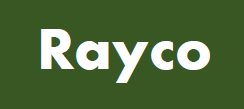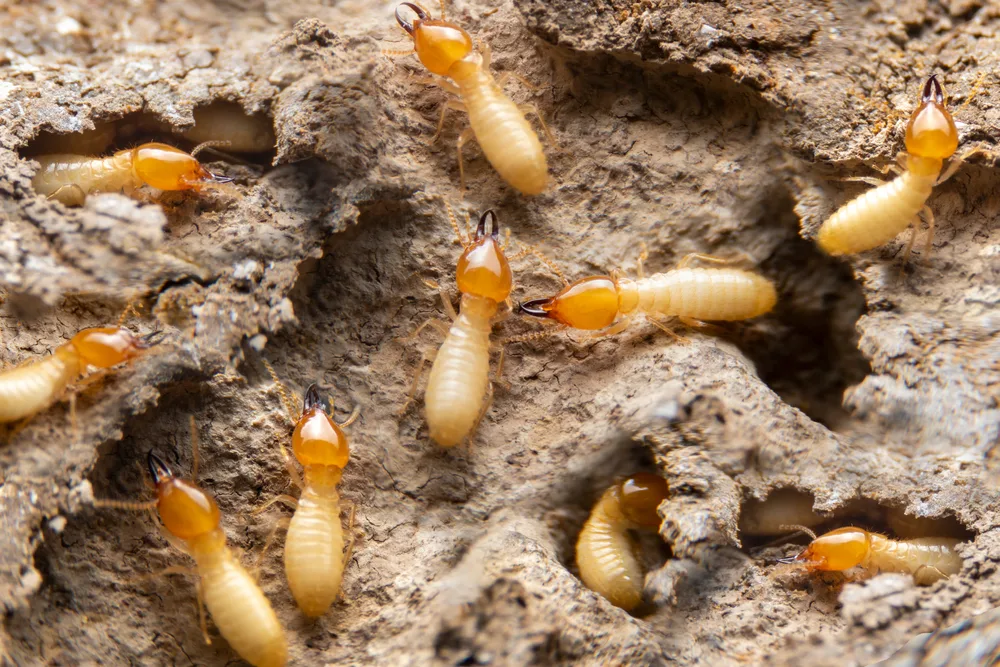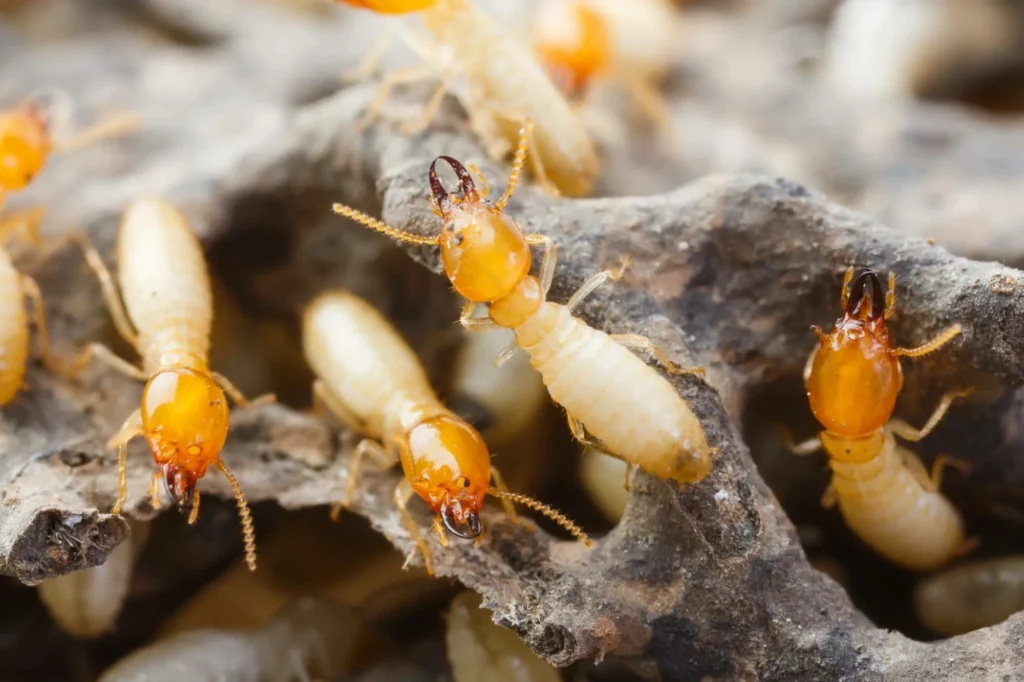In Western Australia (WA), termites are a significant concern due to the state’s warm, dry climate interspersed with humid coastal areas—conditions that certain species thrive in. The most common termite pests in WA belong to a mix of subterranean and drywood species, with subterranean termites being the most destructive to homes and structures. Below are the key termite species you’re likely to encounter in Western Australia:
1. Coptotermes Species (Subterranean Termites)

- Scientific Name: Coptotermes acinaciformis (among others)
- Why They’re Common: This genus is one of the most widespread and damaging in Australia, including WA. Coptotermes acinaciformis is particularly notorious for its aggressive wood consumption and ability to form large colonies.
- Behavior: These subterranean termites build extensive underground nests and use mud tubes to access timber above ground. They’re often found attacking homes, trees, and utility poles.
- Impact in WA: Prevalent across the state, from Perth’s suburbs to rural areas, they’re a top concern for homeowners due to their appetite for structural timber.
2. Mastotermes darwiniensis (Giant Northern Termite)
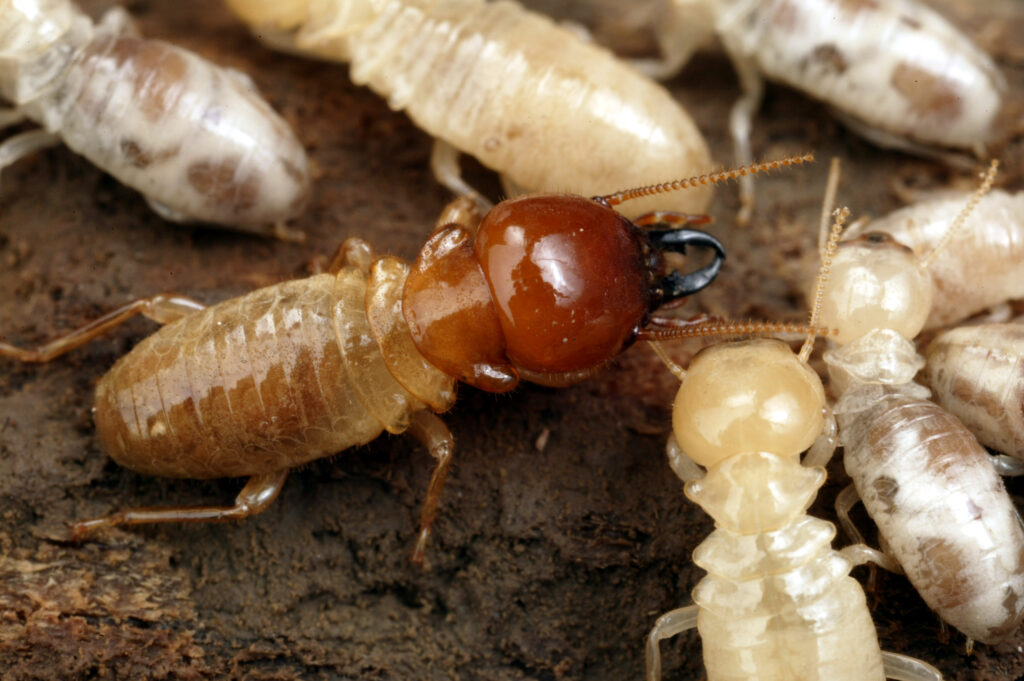
- Scientific Name: Mastotermes darwiniensis
- Why They’re Common: While more dominant in northern Australia, this primitive and highly destructive species extends into northern parts of WA, particularly the Kimberley region.
- Behavior: Unlike most termites, they don’t always need soil contact and can attack a wide range of materials, including wood, paper, and even plastics or rubber.
- Impact in WA: Though less common in southern WA, they’re a major pest in the north due to their versatility and voracious feeding habits.
3. Nasutitermes Species (Snout Termites)
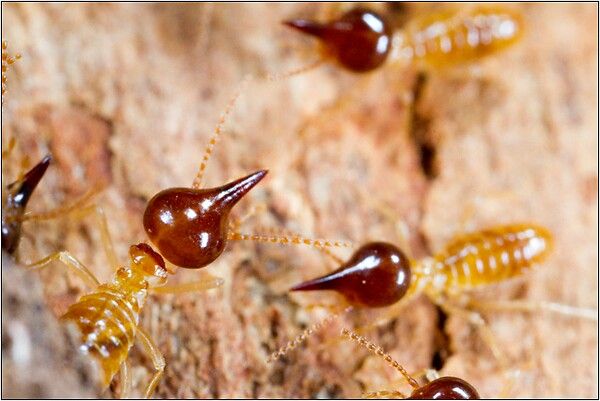
- Scientific Name: Nasutitermes exitiosus and others
- Why They’re Common: These subterranean termites are widespread in WA, often found in bushland and suburban areas. They’re recognizable by their soldier termites’ distinctive snouts, which spray a defensive chemical.
- Behavior: They build mound nests or infest dead trees and stumps, but can also target homes if timber is accessible.
- Impact in WA: Common in Perth and surrounding regions, they’re less destructive than Coptotermes but still pose a risk to untreated properties.
4. Heterotermes Species
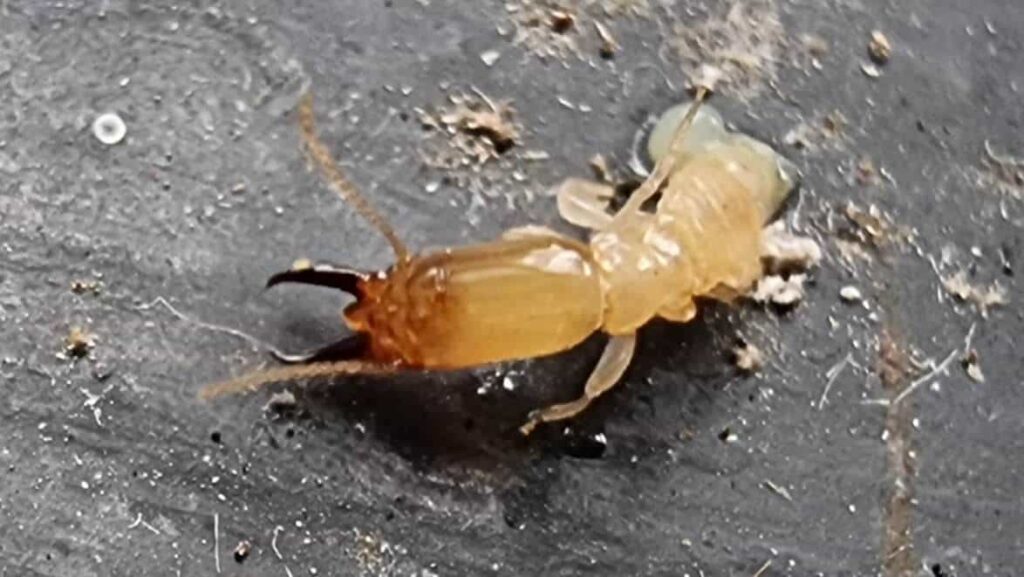
- Scientific Name: Heterotermes ferox (among others)
- Why They’re Common: These subterranean termites are widespread in WA and thrive in the state’s sandy soils.
- Behavior: They prefer damp, decaying wood and are often found in older homes or areas with poor drainage.
- Impact in WA: While less aggressive than Coptotermes, they’re still a frequent pest in residential areas, particularly where moisture accumulates.
5. Cryptotermes Species (Drywood Termites)
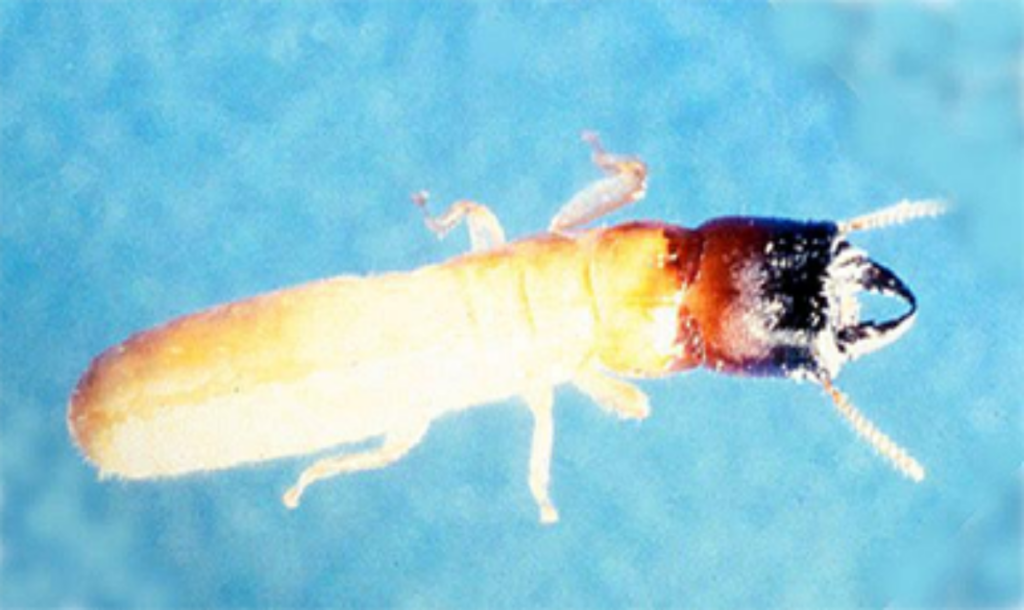
- Scientific Name: Cryptotermes brevis (West Indian Drywood Termite) and native species like Cryptotermes primus
- Why They’re Common: Drywood termites don’t require soil contact, making them suited to WA’s arid interior and coastal homes with seasoned timber.
- Behavior: They live entirely within wood, leaving behind telltale frass (pellet-like droppings). They’re harder to detect than subterranean species since they don’t build mud tubes.
- Impact in WA: Found in furniture, roofing, and structural timber, they’re a growing concern in urban areas like Perth.
Regional Variations in Western Australia
- Perth and Southwest: Coptotermes and Nasutitermes dominate due to urban development and available moisture.
- Kimberley and Northwest: Mastotermes darwiniensis becomes more prevalent, alongside Coptotermes.
- Arid Interior: Drywood termites like Cryptotermes are more common where subterranean species struggle with limited water.
Why These Termites Matter in WA
Western Australia’s termite pests, particularly subterranean species like Coptotermes, are responsible for significant property damage. Their ability to remain hidden while eating through timber makes early detection and treatments like termite barriers or termiticide treatments critical. Homeowners in WA should prioritize regular inspections, especially in high-risk areas like Perth, where urban sprawl meets termite-friendly conditions.
For the most accurate identification and control, consult a local pest control expert familiar with WA’s unique termite population. Staying proactive is the best way to keep these pests at bay!
Get Quote
Blog
Termite Pests in Australia
Termite Pests in Australia: Protecting Your Home from White Ants Australia is home to over…
Termite Treatment for Perth WA
Termite Pests in Australia
Termite Pests in Australia: Protecting Your Home from White Ants Australia is home to over…
